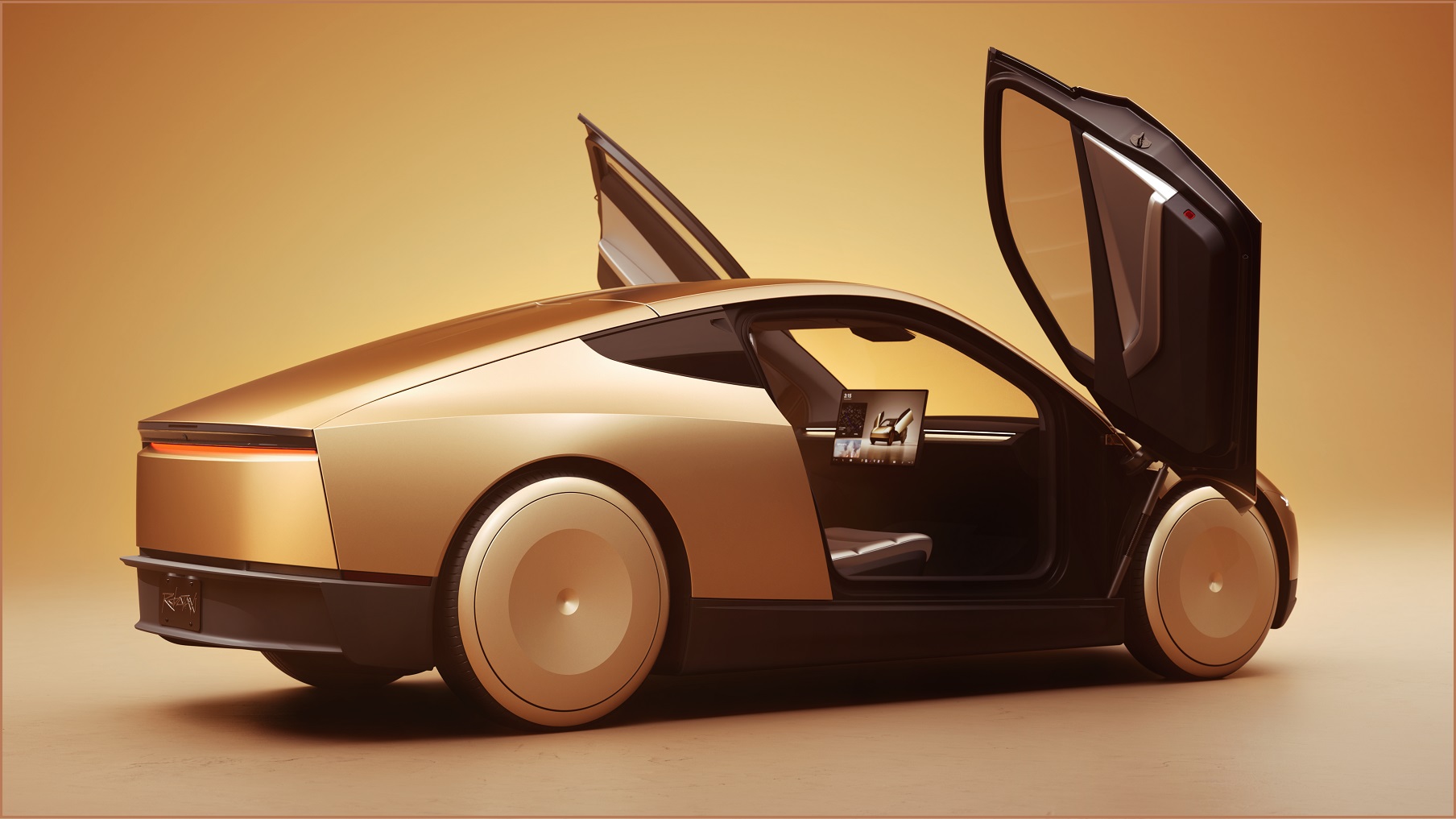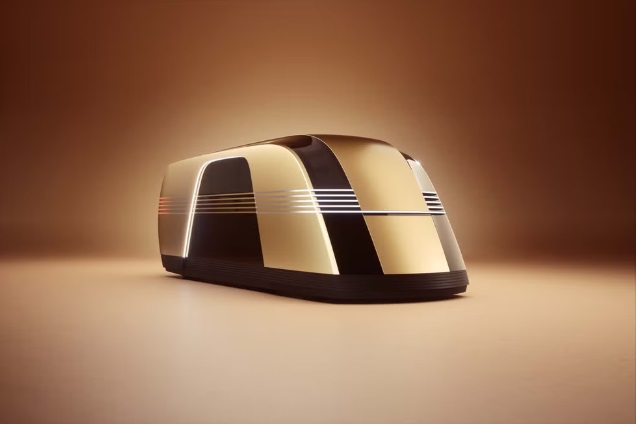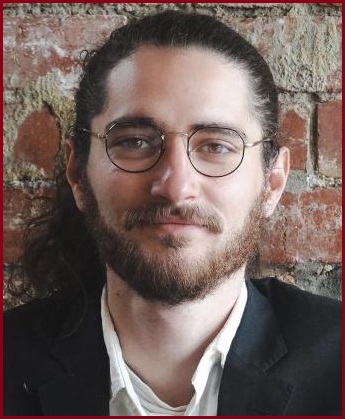Elon Musk has revealed a first look Tesla’s long-awaited Cybercab – a fully autonomous self-driving vehicle which has left investors largely unimpressed amid a near $100 billion sell-off of Tesla’s shares.
In 2019, Billionaire entrepreneur Musk said he was “very confident” Telsla would have its self-driving taxis operational by 2020.
Musk and his tech-vehicle company Tesla have been flirting with fully autonomous cars for the better part of a decade – shipping and repeatedly tinkering with self-driving features through its flagship Tesla models to largely lukewarm (if not occasionally dangerous) results.
After a rocky start to the financial year and some 14,000 global staff layoffs, Tesla ditched its prior plans for a budget-minded Tesla model in favour of an ambitious, fully autonomous vehicle known as ‘robotaxi’.
While initially penned for an August release, Musk unveiled the vehicle – dubbed Cybercab – during a flashy reveal event last Thursday.
Held on the Warner Bros lot in Hollywood, California, the “We, Robot” event saw Musk arrive on stage via a “fully autonomous” Cybercab before announcing the car was not only unmanned but had no steering wheel or pedals.
He further encouraged audience members to participate in Tesla’s idea of an “autonomous future” by riding passengers in a Cybercab around the event’s custom-made set.
“You see a lot of sci-fi movies where the future is dark and dismal – where it’s not a future you want to be in,” said Musk.
“We want to have a fun, exciting future.”
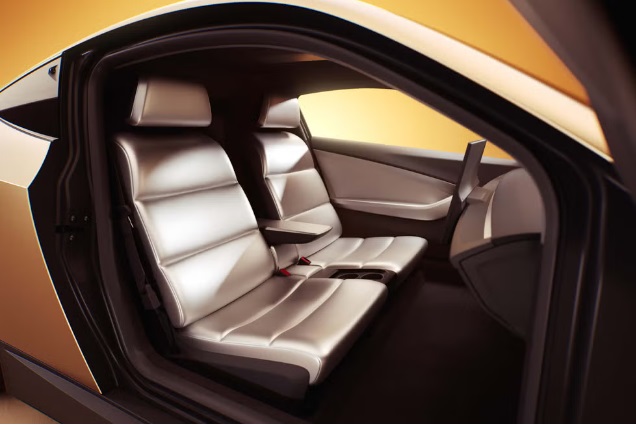
The Cybercab interior. Photo: Tesla
Unsupervised driving
He went on to explain society’s approach to transport accepts a “lot of pain” that is treated as normal – such as driving in busy Los Angeles traffic – before penning the company’s next foray into self-driving vehicles as a solution.
“We’ll move from supervised full self-driving to unsupervised full self-driving,” said Musk.
“You could fall asleep and wake up at your destination.”
Musk highlighted how the average passenger car is not only expensive to purchase and maintain but is only used “10 hours of the week”.
“If they’re autonomous, they could be used 5 times more, maybe 10 times more,” he said.
Musk described the Cybercab experience as “sitting in a comfortable little lounge” while en-route to a given destination.
As for group rides, Tesla and Musk confirmed plans for a sleek “Robovan”, which appears to be the size of a small bus and can purportedly transport goods or groups of 20 people at a given time.
Is that a toaster or a Robovan? Photo: Tesla
Between boasting that autonomous cars will “save lives”, “prevent injuries”, and enable passengers to save time by performing tasks other than driving, Musk said the cost of autonomous transport will be “so low” it could effectively be viewed as “individualised mass transit”.
He added that people will be able to buy their own Cybercab – with the price is expected to come in at less than $44,621 ($US30,000) – before forecasting “fully autonomous, unsupervised self-driving cars” as early as next year in Texas and California with Tesla’s Model 3 and Model Y vehicles.
The Cybercab itself received an “optimistic” release date of some time in 2026.
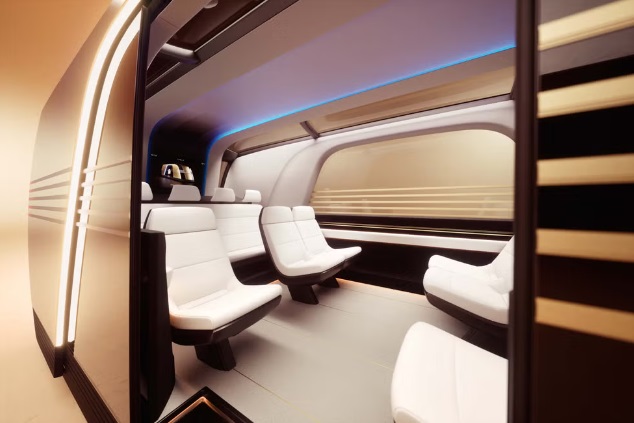
The interior of the Robovan. Photo: Tesla
Fun event leaves not-so-fun stock dip
Tesla’s goals for the autonomous robot vehicles are undoubtedly ambitious, with the We Robot presentation forecasting wide-arching infrastructural changes and opportunities for greenspace in lieu of parking lots, though investors didn’t seem convinced.
Notably, Tesla shares fell nearly 9 per cent on the Friday following ‘We, Robot’, decimating $99.6 billion ($US67 billion) from the company’s market capitalisation.
As reported by the Sydney Morning Herald, this drop-off came after event attendees complained about a lack of solid details, business models or timelines during Musk’s presentation.
Reuters meanwhile reports Blake Anderson, Tesla investor and senior investment analyst at finance firm Carson Group, said the two-seat design of the Cybercab doesn’t make sense for Tesla’s apparent lower-cost, mass-market vision of the product.
"It's probably a way that they can introduce something quick to market," he said.
Notably, Apple recently scrapped its competing plans to build a fully autonomous electric vehicle.
Despite his known tendency to over-promise and under-deliver, Musk further posited an eventual business model where today’s Uber drivers could instead manage a fleet of autonomous cars not too dissimilar to how a “shepherd tends their flock”.
The entrepreneur since appears to have withdrawn from the autonomous vehicle subject on X, where his 201.4M follower profile is currently dominated by posts of rocket launches from his spacecraft manufacturing company, SpaceX.
I (am confused by this) robot
Tesla also showcased an updated version of “Optimus” – a humanoid robot which Tesla says will help with “daily tasks like completing house chores or running errands”.
Musk, who speculates Optimus will eventually become Tesla’s primary revenue source, stationed the robots throughout the event so they could demonstrate their ability to serve drinks, dance and mingle with guests – though seemingly in controlled environments and with a high level of human supervision.
Meanwhile, Tesla’s promotional footage of the Optimus showed it picking up household deliveries, watering plants, playing board games, serving drinks and wiping down a kitchen bench, though it’s unclear how much of this it is actually capable of doing.
“Whatever you can think of, it will do,” said Musk.
“I think this will be the biggest product ever, of any kind.”
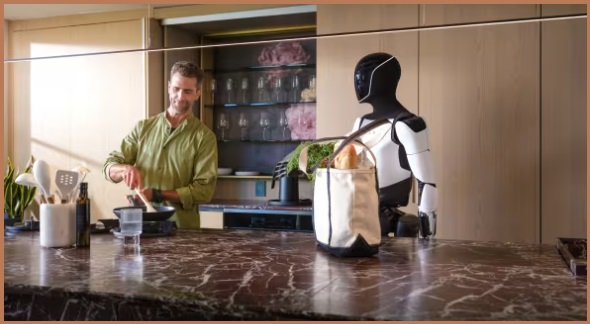
Optimus, please unpack my shopping. Photo: Tesla
Musk didn’t posit a timeframe for the robot, though he said Optimus would cost less than a car “in the long-term”, speculating an eventual price tag of US$20,000-US$30,000.
Alex Proyas, Australian director of 2004 action film I, Robot meanwhile took a shot at Elon Musk for the Cybercab, Robovan and Optimus all sharing uncanny similarities to his blockbuster designs.




